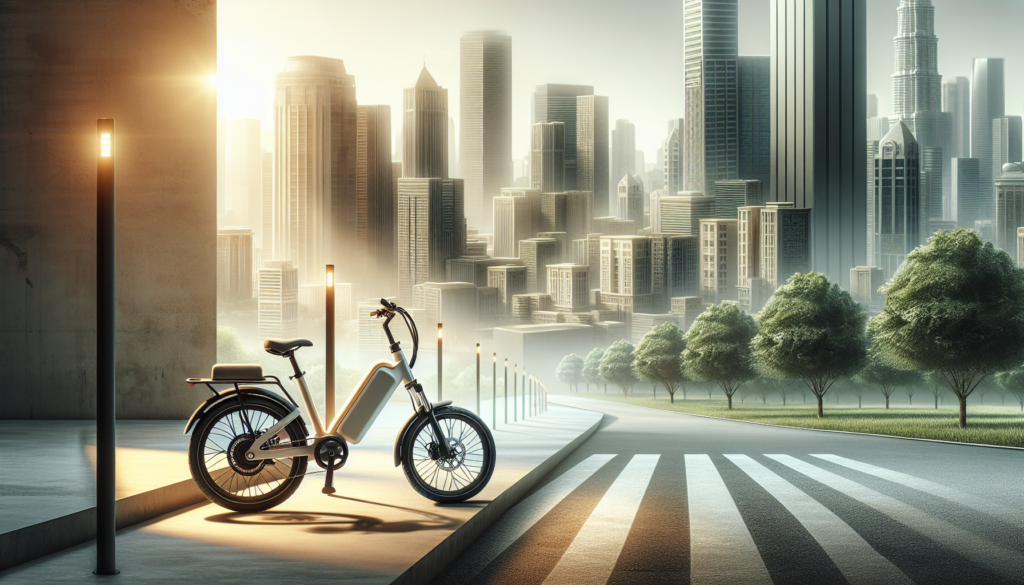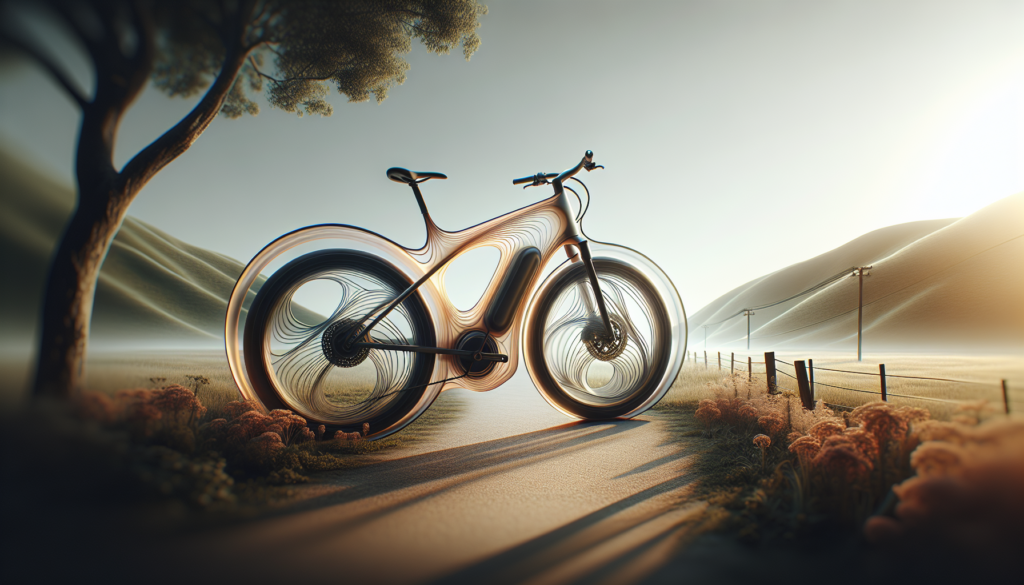
As the demand for electric bikes continues to soar, 2024 brings forward two leading contenders: the Xiaomi Ebike Himo Z20 and the ADO A20 Lite. These cutting-edge e-bikes are designed to cater to various riding preferences and lifestyles, offering unique features that highlight their capabilities. The Xiaomi Ebike Himo Z20 impresses with its dual electrical assist modes and a robust 36V 10Ah battery, while the ADO A20 Lite showcases its lightweight design and three assist modes.
With both models having a range of approximately 60 km and max load capacities of 100 kg, the decision can seem challenging. In this blog, we’ll dive deep into a detailed comparison of these two electric bikes, helping you decide which one suits you best as we explore their specs, performance, and overall value for your riding experience.
Overview of Xiaomi Himo Z20 and ADO A20 Lite
The Xiaomi Ebike Himo Z20 and ADO A20 Lite are two popular electric bike models that cater to different cycling preferences in 2024. The Xiaomi Ebike Himo Z20 boasts a dual electrical assist mode, allowing riders to choose between Dynamic Sports Mode for faster speeds or Cool Mode for a more relaxed ride. Equipped with a robust 36V 10Ah Li-ion battery, it offers an impressive range of approximately 60km. Weighing in at 21.6kg, the Himo Z20 supports a maximum load of 100kg and uses a reliable chain system paired with mechanical disc brakes, all at an appealing price of RM 3,099. This model is ideal for cyclists looking for both performance and versatility on their journeys.
On the other hand, the ADO A20 Lite offers a lighter alternative, weighing only 16kg. It features three electrical assist modes and a 36V 9.6Ah Li-ion battery that also provides a 60km range, similar to the Himo Z20. Despite its lower weight and slightly less powerful battery, the ADO A20 Lite matches the load capacity of 100kg and incorporates a belt system for a smoother ride with mechanical disc brakes to ensure safety. Priced at RM 3,699, this model is perfect for those who prioritize portability and convenience without sacrificing performance. When choosing between these two, consider what fits your riding style and needs best.
Electrical Assist Modes: A Deep Dive
When it comes to the electrical assist modes, both the Xiaomi Ebike Himo Z20 and the ADO A20 Lite offer distinct features to cater to different riding preferences. The Xiaomi Ebike Himo Z20 is equipped with a dual electrical assist mode, allowing riders to choose between Dynamic Sports Mode for a more thrilling experience and Cool Mode for a more leisurely ride. This versatility enables users to tailor their cycling experience based on their needs or surroundings, making it a suitable option for varied terrains and riding styles. The powerful 36V 10Ah Li-ion battery complements these modes, ensuring that you can enjoy longer rides with up to 60km range without frequent recharges.
On the other hand, the ADO A20 Lite provides three electrical assist modes, adding a layer of customization to accommodate different cyclists. Each mode can be adjusted to enhance comfort and performance, giving riders the freedom to choose their desired level of assistance based on effort or speed preference. With a slightly lower 36V 9.6Ah Li-ion battery, it matches the range of 60km, but the nuances in assist modes could greatly influence the riding experience. Ultimately, the choice between these two models boils down to personal preferences regarding performance and ride dynamics.
Battery Performance: Range and Power

When it comes to battery performance, both the Xiaomi Ebike Himo Z20 and the ADO A20 Lite show impressive specifications that cater to different riding styles. The Xiaomi Ebike Himo Z20 houses a robust 36V 10Ah Li-ion battery, offering a commendable range of approximately 60km, making it an ideal choice for adventure seekers who prefer dynamic rides in sports mode. Its dual electrical assist mode allows riders to enjoy a more powerful experience by switching between Dynamic Sports Mode and Cool Mode as per their preference. Weighing 21.6kg, the Himo Z20 also strikes a balance between sturdiness and mobility, accommodating a maximum load of 100kg effortlessly.
On the other hand, the ADO A20 Lite features a slightly lesser 36V 9.6Ah Li-ion battery but still achieves the same remarkable range of about 60km. The ADO excels in lightweight efficiency at just 16kg, thanks to its belt system, which enhances smooth riding. Although it offers three electrical assist modes that provide flexibility during rides, it is priced higher at RM 3,699 compared to the Himo Z20’s RM 3,099. Ultimately, the choice between these two electric bikes hinges on your riding style, whether you value additional power and dynamic options or prefer a lighter model with multiple assist modes.
Weight Comparison: Portability and Handling
When it comes to weight, the ADO A20 Lite stands out with its lightweight design of only 16kg, making it one of the most portable e-bikes in its class. This feature is particularly advantageous for urban commuters or those who need to carry their bike frequently, whether it’s up and down stairs or onto public transport. A lighter e-bike also generally means easier maneuverability and better handling, providing a more enjoyable riding experience. With a maximum load of 100kg, the ADO A20 Lite maintains a balance between being lightweight and robust enough to accommodate different types of riders and gear.
On the other hand, the Xiaomi Ebike Himo Z20 weighs 21.6kg, which is slightly heavier but still manageable for many riders. While this added weight may offer additional stability and sturdiness, it can pose challenges for portability, especially when navigating through crowded areas or during transport. The Himo Z20 also has a maximum load capacity similar to that of the ADO model, providing riders with a versatile and capable e-biking option. Ultimately, your choice will depend on your priorities for portability versus stability in your riding adventures.
Load Capacity: Which Ebike Can Carry More?
When it comes to load capacity, both the Xiaomi Ebike Himo Z20 and ADO A20 Lite offer the same maximum load of 100kg, making them suitable for riders who require significant carrying capabilities. This uniformity allows both bikes to cater to different types of users, whether they need to transport groceries, equipment, or even a passenger. However, the differences in their overall design and weight may impact the riding experience, particularly when carrying heavy loads. The Xiaomi Ebike Himo Z20 weighs in at 21.6kg compared to the ADO A20 Lite‘s lighter 16kg. This difference in weight can be significant when maneuvering or lifting the bike, especially when the rider is close to the load limit.
Hence, while both bikes can support the same maximum weight, the ADO A20 Lite‘s lighter frame might provide a more enjoyable ride under heavy load conditions. Moreover, the choice between these two models revolves not just around their load capacity but also how each bike handles weight when in motion. The Xiaomi Ebike Himo Z20 features a robust chain system, which tends to deliver better torque quality, ideal for heavier setups.
In contrast, the ADO A20 Lite uses a belt system that may offer smoother performance and less maintenance but might slightly lag under close to maximum load conditions. Ultimately, if consistent load performance is a priority, you might want to consider how each bike’s weight and design affect its carrying potential on the road.
Braking Systems: Mechanical Disc Versus Belt Performance

When it comes to braking systems in electric bikes, both the Xiaomi Ebike Himo Z20 and ADO A20 Lite offer mechanical disc brakes, which are renowned for their reliability and stopping power in various weather conditions. The disc brakes provide enhanced modulation, allowing riders to have better control over their stopping distance. The Xiaomi Ebike Himo Z20, being slightly heavier at 21.6 kg, benefits from the efficiency of its mechanical disc brakes that work effectively even under strenuous conditions, making it a safer choice for riders who often venture into dynamic terrains or steep descents.
Meanwhile, the ADO A20 Lite, weighing only 16 kg, also capitalizes on mechanical disc brakes to ensure ease of handling and performance, especially when you need to stop quickly during city rides or unexpected situations. However, the braking performance can also be influenced by the weight of the bike and the rider’s overall experience. Both bikes support a maximum load of 100 kg, ensuring they cater to a range of users.
The perception of braking efficiency might vary, with riders perceiving the lighter ADO A20 Lite as more agile and responsive due to its weight. Ultimately, whether you’re choosing the Xiaomi Ebike Himo Z20 for its robustness or the ADO A20 Lite for its lightweight design, both models utilize mechanical disc brakes that promise dependable stopping power.
Price Analysis: Value for Money
When it comes to price analysis for the Xiaomi Ebike Himo Z20 and the ADO A20 Lite, both models present compelling options within the electric bike market for 2024. The Xiaomi Ebike Himo Z20, priced at RM 3,099, is slightly more affordable while providing exceptional features, such as dual electrical assist modes and a lightweight design of 21.6kg. It is equipped with a robust 36V 10Ah Li-ion battery, offering a reliable range of approximately 60km. This bike’s mechanical disc brakes and chain system enhance performance, ensuring a smooth riding experience tailored for urban adventures, making it a great value for anyone looking to balance affordability with functionality.
In contrast, the ADO A20 Lite comes at a premium price of RM 3,699, but it brings its own set of advantages, including three electrical assist modes that cater to various riding styles and a significantly lighter weight of 16kg. Despite its similar range of around 60km, the belt system and mechanical disc brakes elevate its appeal for those seeking efficiency and lower maintenance. Ultimately, the choice between the two ebikes boils down to personal preferences and intended use, but both models deliver quality and value for money in their own right.
Who Should Choose Which Ebike?
When considering the Xiaomi Ebike Himo Z20, it is the ideal choice for those who prioritize performance and versatility. With its dual electrical assist modes—Dynamic Sports Mode and Cool Mode—it caters to a range of cycling needs, whether you’re looking for an exhilarating ride or a more relaxed cycling experience. Weighing in at 21.6kg, this e-bike provides a sturdy build, suitable for riders who may carry up to 100kg. The 36V 10Ah Li-ion battery offers an impressive range of about 60km, making it perfect for commuters or leisure riders alike. Priced at RM 3,099, the Xiaomi Ebike Himo Z20 presents an excellent value for those who seek a reliable and robust electric bike without breaking the bank.
On the other hand, the ADO A20 Lite is tailored for those who prefer a lighter and more straightforward ride. Weighing only 16kg, it’s easier to handle and transport, making it suitable for those who might need to lift their bike in certain situations. The three electrical assist modes also provide flexibility, though it operates on a slightly less potent 36V 9.6Ah Li-ion battery, still offering a range of around 60km. While the price point of RM 3,699 is higher, the A20 Lite’s belt system might appeal to riders who want smooth performance with less maintenance. Ultimately, both models have their distinct advantages, catering to varying rider preferences and lifestyle choices.
Final Thoughts: Choosing Between the Xiaomi Ebike Himo Z20 and ADO A20 Lite

In conclusion, both the Xiaomi Ebike Himo Z20 and ADO A20 Lite present compelling features that cater to different preferences and needs. The Xiaomi Ebike Himo Z20 stands out with its dual electrical assist modes, making it versatile for various riding experiences. Its robust build, weighing 21.6kg, and the durable chain system ensure that it can withstand regular use, while the price of RM 3,099 offers great value for those seeking quality in a mid-range e-bike.
Meanwhile, the ADO A20 Lite is slightly lighter at 16kg, which may appeal to those looking for a more portable option. With its three electrical assist modes and a similarly impressive range, this bike is priced at RM 3,699, showcasing its unique features as an attractive choice for different riders.
Ultimately, the decision to choose between the Xiaomi Ebike Himo Z20 and the ADO A20 Lite will depend on your specific needs, preferences, and budget. Whether you prioritize weight, versatility, or pricing, both bikes are designed to enhance your riding experience while offering exceptional performance and functionality. Therefore, consider taking a test ride on both models at EKO Life MY if possible and assess which one aligns best with your lifestyle. With the right choice, you can enjoy the thrilling experience of riding an electric bike, making your daily commute or weekend adventures more enjoyable than ever.

The blog summary seems quite short and lacks necessary details to grab my attention.
Dear Jasmine, thank you for your feedback on the blog summary! We value your opinion and would love to create more engaging content for you. If you have any ideas on what you’d like to see in our blog, or perhaps any specific topics you’re interested in, please feel free to share with us! You can reach out to us at [email protected] or give us a call at +60 3-7890 3042. We’re looking forward to hearing from you!
I agree with you, the summary needs more details to encourage readers to read the post.
Thank you for sharing your thoughts, Wong Zhi Heng. We value your feedback and appreciate your suggestion on including more details in our summary. At Eko Life Malaysia, we strive to provide engaging content that encourages our readers to learn more about biking, ebikes, and scooters. We will take your feedback into consideration for future updates. If you have any specific ideas or suggestions on what you’d like to see in our summary, feel free to reach out to us at [email protected] or +60 3-7890 3042.
I’m expecting a long and engaging blog post, not just a short teaser, which the summary is.
Thank you for your feedback, Aisha Rafiq. We understand that you’re expecting a more in-depth blog post. We value your input and would like to invite you to share your idea of what you’d like to see in a longer blog post. Alternatively, you can contact us directly at [email protected] or +60 3-7890 3042 to discuss further.